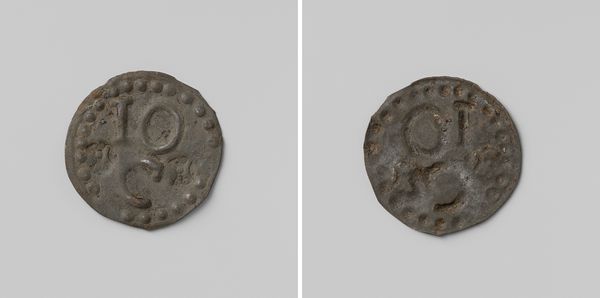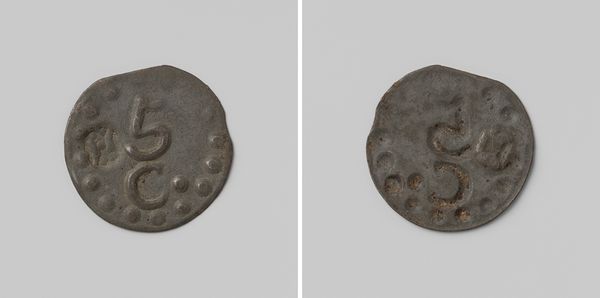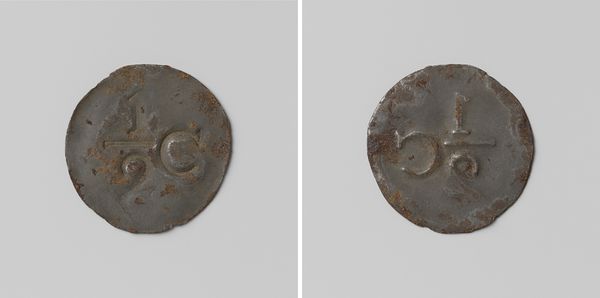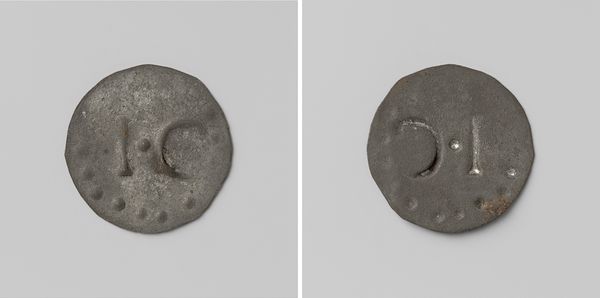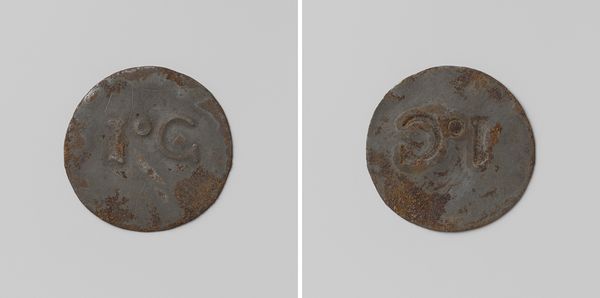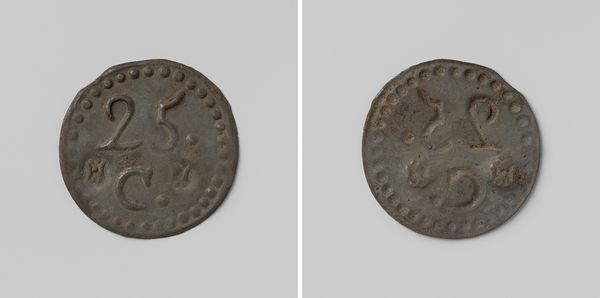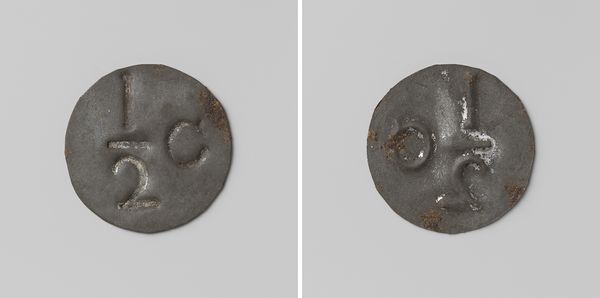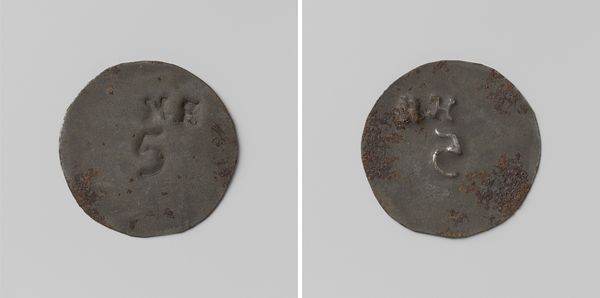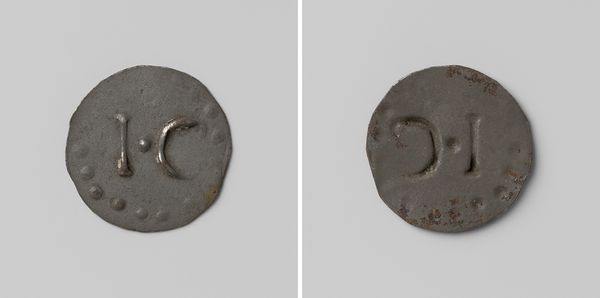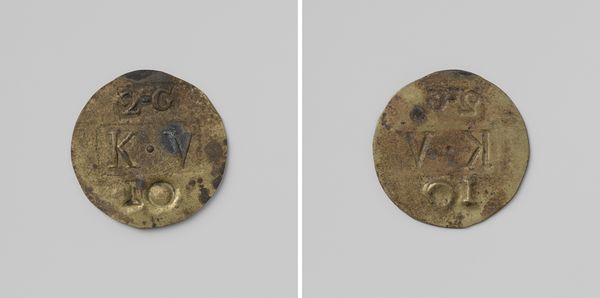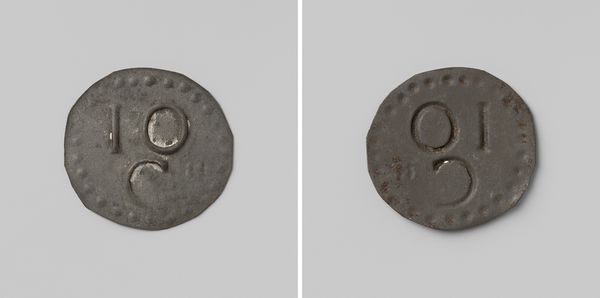
Strafgevangenis Ommerschans, huismunt geslagen op last van de Maatschappij van Weldadigheid ter waarde van 1 cent before 1830
0:00
0:00
anonymous
Rijksmuseum
print, metal
# print
#
metal
#
sculpture
#
geometric
#
ancient-mediterranean
Dimensions: diameter 2.8 cm, weight 1.56 gr
Copyright: Rijks Museum: Open Domain
Curator: Looking at this image, I feel an immediate sense of constriction and control. Editor: That's quite perceptive. We're examining an example of coinage produced at the Strafgevangenis Ommerschans, a penal colony, before 1830. It's currently held in the Rijksmuseum. It represents the "house money" of 1 cent value coined at the behest of the Maatschappij van Weldadigheid or Society of Beneficence. Curator: Beneficence? So it was intended to serve as money within that enclosed world? This piece, though small, raises questions about how societies handle labor and the inherent inequality within controlled systems. Its material, most likely metal, is stamped with the imposed value and therefore embodies labor in a monetary system within confines. Editor: Absolutely. The societal implications of such a "house money" system speak volumes. It illustrates the economics, class, and moral structure embedded within that historical place and period. In those days the coin in circulation within that Ommerschans was to regulate the inhabitants lives and exchanges within that community but served to underscore a social hierarchy. Curator: To consider its materiality—the crudeness, its size—offers another dimension to the story. Its circular design surrounded by these small etched elements suggests an attempt at regularization, in sharp contrast to the presumably "irregular" behaviors it's used to manage. One cannot look at the history and manufacture of an object such as this without considering ideas of discipline and order it represents, on behalf of an imposed and external structure that uses them. The sheer notion that even a small-scale token can reflect something much bigger. Editor: Precisely. The materiality reinforces the historical reality of those imprisoned within this world; stripped of true money. Curator: The implications ripple outward and underscore how cultural narratives shape material culture. Editor: Indeed. The act of examining objects and its provenance leads to wider discussions of power, governance and labor's role within history.
Comments
No comments
Be the first to comment and join the conversation on the ultimate creative platform.
